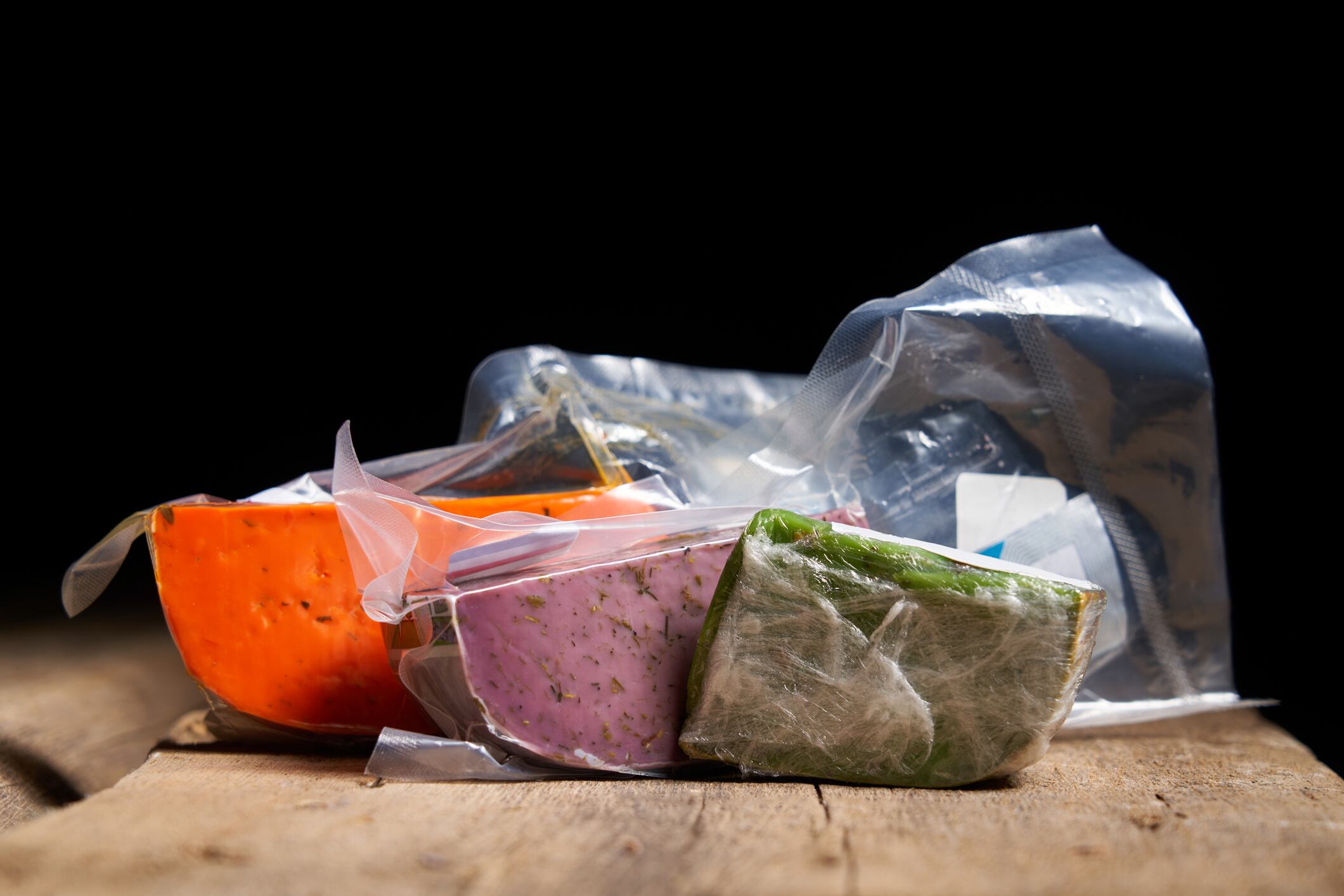It’s not just water and fish - microplastics are abundant in cheese, too, a new study discovered.
The research – which is the first time academics assess the presence of microplastics in cheese – found that ripened cheese contained the highest amount of particles compared to fresh cheese and milk.
Microplastics – tiny fragments of degrading plastics – are widespread in the environment, having been detected in waterways, soils, fish, farm animals and people. Their presence has been linked to various health risks, including cancer.
But little had been known about the particles’ impact on cheese and dairy – until now.
In a study published in npj Science of Food, academics from Italy’s University of Padova and Ireland’s University College Dublin said that microplastics may be shed all along the dairy supply chain; ending up in animal feed and then raw milk on the farm and from clothing, hairnets and protective gear at production plants.
“Given the complexity of the dairy sector and the extensive use of plastic materials along the entire production chain, understanding the pathways through which [microplastics] enter dairy products is crucial for ensuring food safety and assessing potential health risks,” the authors explained.
What has previous research found?
Previous research had detected microplastics’ in powdered and packaged milk as well as yogurt, butter and sour cream.
For example, a study of a Turkish milk-based beverage found the highest level of microplastics concentration after the homogenization and pasteurization steps – though plastics were already detected in raw milk samples.
And another study that tested different milk types, from raw and pasteurized to powdered, found contamination in all varieties – though powdered milk was worst affected, the presence of plastics there linked to packaging materials and processing.
Even organic dairy is not safe from microplastic contamination.
An investigation into butter and cream products found that conventional butter had the highest concentration of plastics (7,875 microplastic (MP) particles per kg), followed by sour cream (5,600 MP/kg), and organic butter (2,500 MP/kg).
Taking a closer look at the category, the Italian and Irish researchers analyzed 28 dairy samples ranging from ripened to fresh cheese and milk. They assessed the level of microplastic contamination in each sample, and categorized the types of polymers.
Why cheese was the most affected by microplastic contamination
Poly(ethylene terephthalate) (PET), polypropylene (PP), and polyethylene (PE) were most frequently detected plastic particles in dairy – and cheese bore the highest level of contamination.
Ripened cheese clocked 1,857 particles per kg – followed by fresh cheese (1,280 per kg) and milk (350 per kg).
The reason why cheese was worst affected is likely down to the way it’s made, the authors think.
“This is likely due to the cheese-making process, as a procedure that removes whey, thereby reducing total mass and concentrating solid components, including any MP [microplastic] fragments,” the said. “In other words, it is likely that MP are not preferentially removed through the whey fraction, resulting in their concentration in the curd.”
The same logic applies to butter and other high-fat dairy products, in line with previous findings. “This supports the hypothesis that intensive processing and high-fat content may facilitate MP accumulation,” said the authors.
Another reason why there was more plastic in ripened cheese was to do with maturation – extended storage in plastic materials may lead to release of more particles, the authors explained.
Where is plastic in dairy coming from?
This doesn’t explain why microplastics have been detected in various other dairy products over the years – but there’s a clue in the size of the particles.
In the current study, most microplastics measured under 150μm – and similar-sized particles were found in previous studies covering products such as beverages and powdered milk. This suggest plastic contamination happens in similar ways irrespective of production processes.
As for how plastics end up in dairy, well – the contamination is likely down to processing equipment, packaging degradation or airborne particles released during production, the authors concluded.
For example, gray-colored particles were linked with food-contact plastics, such as films, liners and closures; these plastics likely end up in dairy due to handling, storage or mechanical abrasion. And the presence of transparent PET pieces was also attributed to packaging.
“The differences in [microplastic] contamination levels among the three product categories analyzed in this study…suggest that ripened cheeses are more susceptible to MP contamination, likely due to the complexity of their production processes and the materials used throughout their supply chains.
“Both the production process and the packaging materials used may influence the level of contamination, and specific mitigation strategies should be developed accordingly.
“Future research should be conducted at the plant level, encompassing all stages of the production process to identify specific sources of MP contamination and to support the development of effective mitigation strategies.”
Source:
Visentin, E., Niero, G., Benetti, F. et al. Assessing microplastic contamination in milk and dairy products. npj Sci Food 9, 135 (2025). https://doi.org/10.1038/s41538-025-00506-8

